Working in Japan Can Be Lonely
Due to language, cultural and mindset barriers, working at a Japanese company as a foreigner can be unintentionally lonely at times.
This time working remotely has let me reflect a little on why I sometimes feel lonely working in Japan.
Since moving to Tokyo in late 2014, I’ve been working in marketing at a Japanese agency. My immediate team has just under 20 people. Everyone is Japanese aside from myself and a couple of Taiwanese who are either based in Taipei or frequently in and out of the Tokyo office.
I’m generally fine working on my own.
When working in marketing, however, especially with regards to strategy and creative - things that I do - it’s best to be able to collectively brainstorm and have discussions where ideas are bounced off each other.
But I don’t really have that on an everyday basis. Nor am I able to fully take part in a lot of discussions or training events.
There are a couple main reasons why a separation exists.
1. My Japanese isn’t good enough.
Not only does my Japanese language capability provide an obstacle in my comprehension and ability to effectively communicate, my not being as culturally in tune as the Japanese people around me can sometimes put me on a different wavelength.
A recent example is when a colleague talked about an “online business card trading” service being amazing, especially during this time of remote work. I understand business card trading is a part of Japanese business culture so the service may be useful, but I consider it more to be a timid half-step forward. This is especially the case for me since while on a business trip to the CES convention in Las Vegas in 2015, I was about to give my business card to someone when he simply waved his phone over my neck pass and got my info. I remember clearly how I felt like an outdated fool. That was 5 years ago.
And of course there’s just a lack of commonality in the pop-culture we’re a part of for general conversations. Compare App Store, Apple Music or Netflix popularity rankings - Japan is often quite different from a lot of other countries. I wouldn’t expect it to be like my or another foreigner’s home countries obviously, but it does mean that there may be even less common ground to connect on.
2. Lack of “International”
In relation to non-Japanese residents living in Japan, this is a really general outline of society:
LEFT: You have typical Japanese people. The majority doesn’t speak English, have little or no international experience and aren’t used to working with non-Japanese.
RIGHT: You have the various foreign expats who may or may not speak some Japanese and are in Japan for a short-term.
MIDDLE: The internationals. They have experience both in Japan and out but some may not be truly native-level speakers anywhere, they likely speak a language that mixes English, Japanese and perhaps another language. Many of the capable ones will work in international companies.
I fall into the “international” category, probably leaning to the right because of my mediocre language skills. But because almost all of my colleagues and company itself falls firmly into the left side, it takes more effort for someone like me to try to include myself.
The truth is a lot of Japanese - and this is for any country, not just Japan - don’t have an interest in things foreign. My non-Japanese colleagues and I have been told in the past that there are some colleagues that we can’t work on international projects with because of a lack of interest and ability to comprehend things foreign. This wall and lack of workaround is an unfortunate reality that only impacts the foreigners.
I was reminded of this separation when the only email to unsubscribe from the English newsletter I sent out on behalf of our team was, in fact, our own team’s email address. That meant a colleague decided to unsubscribe from it.
To be honest, I thought that was fucked up considering it’s clearly sent from our own company. I know better than to unsubscribe from our Japanese or Chinese communications. Our non-Japanese communications are generally ignored, which can feel isolating, but to take action to stop it is another level.
But other than that, there’s no real maliciousness or purposeful segregation. It’s mostly whether or not someone wants to make an extra effort to connect. I was astounded when I took a look at how much time I spent on just trying to understand communications, time I could be spending on being productive in something else. That’s completely on me.
This feeling of separation and created walls, though, is to be expected unless a company is really striving to be diverse.
I think this is a challenge for any Japanese company attempting to be more international. How do you do that without straying from being “a Japanese company”? It’s a structural revision tied to core values that needs to be carefully planned out and purposefully followed. I don’t have an answer for that either, but I know it’s not just adding foreigners onto the payroll.
I’m lucky that, for the most part, I have some colleagues who I do connect with, others who are in that left side but do their best to do so, and that there’s no discrimination or anything.
Yes, it is often lonely and there is a separation that’s often felt. After all though, the choice of where to work, where to live and what to do is our choice and up to us.
Keep in touch:
The Professionals Using TikTok to Grow
Opportunities arise when there’s awareness of a business, and lawyers, medical professionals and others are using TikTok to grow their awareness.
TikTok often gets mistakenly written off as a network of nonsense. The reason why I say “mistakenly” is because this is a recycled conversation that’s happened with every new network before it and at the end of the day, how we judge something has no real impact on the reality.
Hundreds of millions of people around the world are using TikTok and consuming content there. In Japan, 9.5 million are as of the latest official announcement.
Many eyes and ears tune into TikTok, which means while they do, they’re not in Instagram, Facebook, etc. While people are there, many - even professionals - are building awareness about themselves and what they do in life.
As is with anything, awareness leads to opportunities.
Here are a few people I’ve come across, and each has gotten tens to hundreds of thousands of playbacks on videos, if not more, and amassed a following. Now think, how much would it cost to run an ad or TV commercial for those views?
LAWYERS
MEDICAL PROFESSIONALS
TEACHERS
The reason why I chose to show examples from the legal, medical and education fields is because most wouldn’t say they fit on a network that gets stereotyped as childish, dancing and singing nonsense.
If people in these types of respected fields are growing, imagine what chefs, trainers, fashion designers, athletes, musicians and others are doing.
Now, TikTok is completely different from other networks and is, in my opinion, difficult. But if it continues to grow like expected, the sooner we try it out the better.
KEEP IN TOUCH
share
How Brands in Japan are Responding to COVID-19
What some brands and celebrities in Japan are doing in reaction to COVID-19/Coronavirus.
After the Japanese government declared a state of emergency and strongly requested businesses and people to cut person-to-person contact by 70% in early April, some people and businesses have responding to help produce things in need, align messaging, and help everyone stay home.
These are some businesses in Japan have done.
Iris Ohyama
当社は、政府からの要請に対応するため、6月稼働予定の宮城県角田工場のマスク生産能力を1億5千万枚/月に増強します。
— アイリスオーヤマ株式会社【公式】 (@irisohyama_info) April 22, 2020
中国におけるマスクの重要資材である不織布の価格高騰も考慮し、同工場内に資材製造設備も新たに導入することで内製化率を高め、供給体制を見直します。https://t.co/2bNtldRjtg
The home electronics company announced that they’d be producing 60k masks/month, and will increase production starting in June.
SHARP
なお本日より生産開始したマスクは、3月下旬には出荷できますが、まずは政府への納入を優先します。より切実にマスクを必要とされる場所へ提供を図るためです。その後、一般向けには自社のECサイトでのみ販売する予定です。 https://t.co/XV450iC9Sg pic.twitter.com/t8OUiM7h7l
— SHARP シャープ株式会社 (@SHARP_JP) March 24, 2020
Due to having facilities enabling production of masks in a sterile environment, the Japanese government asked Sharp to help out. Sharp is producing masks and selling them once a week online through a lottery system.
SHARPさん@SHARP_JP ロゴがおうちの中にいるし、距離も保ってる。
— aya_endo@広報PR (@aya_pee) April 8, 2020
これは、好きっ!てなるやつ。
まさに、「目の付けどころがシャープでしょ。」 pic.twitter.com/2GExhI8wEr
They’ve also changed their logo on social media, using the kanji for “home.” Sharp’s Twitter account is regarded as one of the best company accounts in Japan due to their wit and responsiveness, a big contrast to the social stiffness that plagues Japanese companies online.
SHUEISHA
本日いまから!
— ONE PIECEスタッフ【公式】 (@Eiichiro_Staff) March 9, 2020
長期春休み応援
ONE PIECE1巻〜60巻
無料開放スタート!
👇ジャンプ+https://t.co/UzmF5EnTJJ
👇ゼブラックhttps://t.co/jGxmw8bQmt#OnePiece pic.twitter.com/y9RuaVgS7u
A major Japanese publisher, with names like Dragonball-Z, ONE PIECE and Naruto, made some back issues of their popular manga titles free, as well as some issues of their Shonen Jump magazine through their app. This came as Japan shut down schools in early March, suddenly giving kids a lot of free time at home.
APA HOTEL
アパホテル「軽症や無症状の人 全面的に受け入れ」新型コロナ #nhk_news https://t.co/RNrq7Xsw4I
— NHKニュース (@nhk_news) April 3, 2020
To help with the overflow of people infected with COVID-19, business hotel chain APA Hotel opened its doors to those with mild symptoms.
SHISEIDO
現在生産中の手指消毒液(指定医薬部外品)。
— 資生堂 ShiseidoCo.,Ltd. (@SHISEIDO_corp) April 21, 2020
品質と安全性を何ものにも優先し、徹底した品質管理を行っています。#資生堂 #shiseidoforsociety
▼詳しくはこちらhttps://t.co/0V8s3fiBzB pic.twitter.com/Cpsa8xINKT
While it initially started only in France, Shiseido began producing hand sanitizer in its Japan factories as well, saying they will be able to manufacture 200k bottles/month for sale to medical professionals. They also will share their formula with other companies since theirs helps prevent hands from over-drying due to excessive use.
P&G Japan
P&G Japan to donate a million masks to hospitals https://t.co/vFVLxaMyU0
— The Japan Times (@japantimes) April 23, 2020
The Japan leg of P&G will donate 1M masks to medical institutions starting in mid-May. They also provided 100L of industrial-use ethanol to use as disinfectants.
VARIOUS ALCOHOLIC BEVERAGE BRANDS
[ITmedia NEWS]消毒用アルコールと同じ度数の「お酒」続々 新型コロナ対策で https://t.co/mctaefhsuL
— ITmedia (@itmedia) April 10, 2020
Alcohol makers such as Meiri, Kikusui and a few others shifted production to sell bottles of non-drinking alcohol. While it’s noted that they were made for the purpose of drinking, they meet the requirements for a high-concentration ethanol product (65-80% alcohol) that can be used for disinfection.
BRANDS HAVE GOTTEN CREATIVE IN THEIR MARKETING
The shift to staying home meant brands had to adapt their messaging to people’s realities. Here are a few that have.
POCARI SWEAT
今はみんなで会えないけれど、
— ポカリスエット【公式】 (@pocarisweat_jp) April 15, 2020
歌は歌える。
新ヒロインの汐谷友希さんと、
97名の中高生たちが、
自分の場所で、自分らしく、
ひとつの歌を合唱しました。
2020年春、「渇きを力に変えてゆく。」#ポカリNEO合唱#ポカリスエット pic.twitter.com/03XhZwUnv2
Sports drink brand Pocari Sweat’s commercials always gain a lot of buzz, choreographing a song and dance that includes huge amounts of jr high and high school students. They were quick to create a stay home version that included 97 students, launching it in the middle of April. They also opened up a challenge inviting new participants through application via TikTok.
PANTENE
Pantene modified their campaign to have a double play on words. Their campaign #HairWeGo was playing on “Here we go” and relating it to their hair market, but they changed it again to “Heya we go.” Heya (部屋) in Japanese means “room”, and the new campaign invited people to post photos of their home hairstyles while including a few celebrities as well.
SUNTORY
お酒や飲料を通じて、人と人のつながりをつくってきたサントリーだから。
— SUNTORY(サントリー) (@suntory) May 8, 2020
いま「話そう。」というメッセージをお届けします。
笑って、愚痴って、分かちあって
感情が外に出れば、心は少し軽くなる。
大丈夫。つながってる。#話そう
全13回の「話そう。」はじまります。#サントリー
Beverage brand Suntory called on over 40 celebrities and personalities and created a 13-episode longform video series featuring them conversing. Stating that Suntory’s drinks are about people-to-people connections, their “Let’s talk” campaign encourages people to laugh, complain and share in order to help lift each other’s spirits.
CELEBRITIES HAVE TAKEN ACTION
A few celebrities were early to take action in helping people to stay home, something refreshing to see in a country where many of them refrain from stirring the pot.
NAOMI WATANABE
One of Japan’s biggest celebrities, Naomi Watanabe, invited people to livestreams on YouTube of her eating dinner with the intention of keeping those who are eating alone at home company.
She has also livestreamed on Instagram, done makeup tutorials as well as featured other celebrities. Her streams have had millions of viewers.
Gén HOSHINO
Musical artist Gén Hoshino created an original song and tied it to a #DancingOnTheInside challenge, encouraging others to do the same. It sparked a series of collaborations from top celebrities and regular people alike.
YOSHIHIDE KIRYU
Japanese Olympic sprinter Yoshihide Kiryu introduced several exercises people could do at home in order to train. They’re aimed at jr high and high school students as the school year and track and field practices have been impacted by COVID-19.
MASATOSHI HAMADA
/
— 出前館【公式】 (@demaecan) April 27, 2020
吉本所属タレントの皆様、ファンの皆様、
そしてSTAYHOMEしている皆様🏡
\
こんなキャンペーンが始まります👇
タレントの皆様は食事動画等をつけて投稿してください🎦
その他の皆様にはタレントさんの投稿から500円クーポンをゲットしてください👍#浜田のおごり #出前館 #PR #吉本自宅劇場 pic.twitter.com/k3LU5m1Lmg
In a collaboration with Japanese delivery service Demaecan, comedian Masatoshi Hamada is offering to provide a discount to other comedians, actors, musicians and performers who have been affected by canceled gigs and job losses due to COVID-19.
Know of any other brands or celebrities in Japan doing great things? Let me know!
KEEP IN TOUCH
SHARE
Working From Home in Tokyo
A look at working from home in Tokyo, as the city is now in a quasi-lockdown and tries to reduce person-to-person contact by 70%.
Unfortunately, shortly after I talked about Tokyo being in a mystery situation regarding COVID-19/Coronavirus, cases spiked.
The situation in Tokyo (as of April 2020)
The country declared a state of emergency in early April. Apparently, the law forbids the government from enforcing a full lockdown, so Tokyo and several other prefectures are in more of a quasi-lockdown, with the government firmly requesting adjustments to business and working from home.
The goal is to cut person-to-person contact by 70%.
While many non-essential workplaces have abided, some haven’t.
Luckily, my company has had a work from home option since the beginning of March.
What I do
I work at a marketing agency, TAMKO, and most of the projects I’m on are with international clients so I’m never in physical meetings with them anyway.
Even on regular office days, it’s common for my teammates or myself to not always be in the office, so communicating through chat or video conferencing is already something we’re used to.
The daily routine
The majority of our communication happens over Slack. To clock in, we type one of several messages and it’s recorded automatically. Most people use “おは” (oha) which is short for ohayogozaimasu, or “good morning.”
Almost all communication happens in Japanese.
I go about my day checking and replying to emails (we use Gmail), working on client projects as well as internal ones, and having an occasional meeting or virtual team lunch.
For lunch, I try to make something simple or eat leftovers, but sometimes there’s nothing or I’m lazy.
My usage of Uber Eats has gone up quite a lot.
I’m not alone, apparently.
The app has recently been in Japan’s top 5 of the App Store’s free app rankings, and has gotten additional exposure by people like celebrity Tsubasa Honda, who recommended the service in a YouTube video that got 1.8M views in a little over a day.
I’ve been watching a lot of YouTube while I eat lunch. I tend to watch videos where I can learn something from, videos from channels like CNBC, Vox, Gary Vaynerchuk, Business Insider, some vloggers and so on.
Amazon has also been pretty great.
For the most part Amazon deliveries have been so far unaffected by the situation.
Amazon Prime deliveries in Tokyo are really fast, sometimes within 12 hours if you order the night before.
My apartment also has a delivery box system in case we aren’t home or able to get our deliveries when they come in. It’s been helpful as we order online a lot, especially during this time.
About twice a week, we have an all-hands team meeting. We were using Google Hangouts but have more recently switched to Zoom for these.
If you’d like to see a day in motion, feel free to watch the video I made.
Otherwise, I hope everyone is doing as well as can be.
KEEP IN TOUCH
SHARE
A Snowy Spring Day in Tokyo
Photographing the streets of Setagaya, Tokyo on a snowy, spring day.
2020 has been an interesting year to say the least.
Amongst the odd occurrences was Tokyo getting its heaviest snow day of the season. The catch? It was in late March, after the cherry blossoms were already out.
Snow fall in the city is one of my favorite conditions to photograph, so I walked around the Kyodo area of Setagaya, Tokyo on this day.
KEEP IN TOUCH
How Hawaii Brands are Responding to COVID-19
A list of Hawaii brands taking admirable actions to help the local community during the COVID-19 pandemic.
In the days and weeks following the COVID-19 / Coronavirus outbreak, as a marketer and just out of curiosity, I began to pay attention to how people and brands were responding.
Many have admirably stepped up around the world, but I’ve paid a little more attention to my hometown in Hawaii. Even more than I expected, many in the community have come together to do their share.
I put together a list of brand actions I’ve seen so far that I found admirable.
Central Pacific Bank: “Keep Hawaii Cooking”
Because Hawaii was put on lockdown, business basically came to a halt and small businesses are some of those who feel it the hardest.
To help keep things moving, Central Pacific Bank launched the #KeepHawaiiCooking campaign where they would split the bill and pay a 50% refund via DM and PayPal to people who ordered delivery or takeout from local eateries.
They launched a website with details on how to participate as well as all of the restaurant options (categorized too!).
In less than a week, they’ve reached 75% of their goal of sharing 10,000 meals and have given back $100k to local restaurants.
https://www.keephawaiicooking.com
Hawaiian Airlines: Mahalo to the Healthcare Community
In order to help local hospitals and clinics manage the logistics of their healthcare personnel, Hawaiian Airlines is providing free inter-island flights to their medical professionals so that their work goes as smoothly as possible throughout Hawaii.
https://newsroom.hawaiianairlines.com
HONOLULU MAGAZINE: Shop Local
In an effort to support local designers, artists and boutiques, Honolulu Magazine teamed up with over 50 local brands to host an online shopping event.
People, while shopping from home, can access special deals through their promotion.
Recognizing that it’s not just restaurants and small businesses that are being hit by effects of COVID-19, many small businesses in the food industry have helped to do their part.
A Cake Life: Essential Workers Giveaway
In addition to giving out cupcakes to healthcare workers and first responders, they also let others participate for giveaways.
People were invited to nominate friends and family working in essential roles, and those being put at risk at work. Posts for jobs in healthcare, restaurants, hotels, first responders and supermarkets were done, and free bags of cake cups were given to winning nominations.
Asato Family: Community Thank You
To show their gratitude to those in the community working in healthcare during this pandemic, family-owned and popular local sherbert shop delivered bags of individually cupped sherbert to hospitals.
https://www.asatofamilyshop.com
I’ve come across Stories being shared of other businesses helping out as well.
Watanabe Floral: Bouquets for Healthcare
Enjoy Snacks: Snack Bags for Healthcare
Other brands and musical artists are providing content to entertain people while they stay at home.
Salvage Public: Artist Showcase
Fashion brand Salvage Public is showcasing local artists through Instagram’s IGTV as well as letting artists do account takeovers.
Jack Johnson: Together At Home
Musical artist Jack Johnson is a goodwill ambassador for the UN Environment Programme, and in collaboration in collaboration with Global Citizen in support of the World Health Organization (WHO), put on a #TogetherAtHome livestream concert from his living room.
I should have expected Hawaii, a place with a strong culture of community, to react this way. It’s great to see, and after all, we’re all in this together.
I’m sure there are many other campaigns and stories of positivity, so tell me if there’s one I should know about!
KEEP IN TOUCH
SHARE
Japanese Celebrities to YouTube Stars: Haruna Kawaguchi
Haruna Kawaguchi is the latest Japanese celebrity to become a YouTuber.
Bloggers, artists and others who’ve gained fame through social media have been moving into the mainstream for a while now, and over the past few years as social networks became our primary communication channels, it’s gone the other way as well.
Celebrities, athletes, business people and more have been increasing efforts in building a presence on social networks and YouTube.
Will Smith is a prime example.
In Japan, celebrities becoming social media stars is just beginning.
Enter Haruna Kawaguchi.
The actress/model already has the 33rd most popular Instagram account in Japan (as of April 1, 2020) with 2.5 million followers.
Rather than put out a highly curated feed, which can be expected at times in Japan especially due to overly controlling agencies, some of her posts are almost questionable (photographer’s bias!).
It’s clear that she’s providing the value of access.
She often provides relatively honest, inside looks at her life - where she talks about things from dealing with emotions to the pain of a pimple.
And now that access is being provided on YouTube.
In February 2020, Haruna Kawaguchi became Japan’s latest celebrity to become a YouTuber.
Posting around a video per week so far, she’s been vlogging about things like grocery shopping with her mom, spending time at her parents’ house on a small island off of Nagasaki, and trying to learn English.
This authentic, real life approach seems to be working.
In about 2 months, she’s put out 10 vlogs and has grown her channel to over 882k subscribers, adding as many as 15k subscribers each day in the past 30 days, according to TubeBuddy.
This YouTube audience places her well inside Japan’s top 300 biggest channels.
She’s also gotten a total of 23.5 million views. For reference, it would be typical that these views have earned her tens of thousands of US dollars each month from ads so far.
Her latest video got over 1 million views in the first 24 hours.
The more celebrities dip into vlogging, the more will follow.
For actors like Haruna Kawaguchi and Will Smith, YouTube in particular provides entertainment in a format (video) that people are already used to seeing them in and want to see them in.
The increased exposure through these vlogs provides fans increased access, and it allows them to be relevant them during the times they’re not on TV or in theaters.
This also helps strengthen existing connections, giving them more leverage in the future than they’d likely have just relying on traditional media.
KEEP IN TOUCH:
SHARE:
Honolulu Street Walks
Taking my camera around the Kakaako, Kaimuki and Downtown areas of Honolulu, Hawaii.
I was recently in Honolulu, Hawaii, for a friend’s wedding. For a week and a half I got to play tourist in my hometown, meeting up with friends and trying new places that have popped up over the years.
Bringing a camera out is not so common for locals in Honolulu, but I decided to do it as much as I could.
While I was there, I frequented the Kakaako, Kaimuki and Downtown Honolulu areas the most.
KEEP IN TOUCH
Friends' Wedding in Hawaii
Seeing friends Ryan and Kathy get married in Honolulu at the Nutridge Estate.
Kathy and Ryan after marrying
I recently went home to Honolulu, Hawaii, to see my longtime friend Ryan marry my more recent friend Kathy.
The wedding was at the Nutridge Estate in Tantalus, was casual, warm and really fun. It suited them quite well.
I took my camera with me and shot around a bit. Here’s some of what I took.
Kathy and Ryan get married outdoors
Congratulations!!
KEEP IN TOUCH
SHARE
Life in Tokyo During the Coronavirus Pandemic
How it’s like living and working in Tokyo during the COVID-19 / Coronavirus pandemic.
Not much panic has been seen so far, supermarkets are fine but some items are out of stock
Big changes for me include optional remote work, but many companies are business as usual
There seems to be little social distancing, but Japanese cultural norms may help a little
Japan was one of the early countries to see COVID-19 / Coronavirus cases boom. The cruise ship Diamond Princess was quarantined just south of Tokyo in Yokohama Bay and others got it from a taxi driver in the city.
The government then canceled school, graduations and school entrance ceremonies. (The school year ends in March, starts in April)
So how is life now in one of the early Coronavirus hot spots?
THERE HASN’T BEEN MUCH PANIC, BUT THERE ARE SHORTAGES
From videos of Costco rushes to brawls over toilet paper, it seems that there’s considerably more panic occurring outside of Japan.
Masks have been sold out for weeks now, however, toilet paper and tissues are scarcely found, and soaps and hand sanitizers are low on stock. The rest of the items in the supermarkets are fully stocked as usual.
This lack of panic is something that Japan has been quite good at, albeit access to necessities are currently problem-free.
Could it be naivety and having too much faith in the good infrastructure? Maybe. But even after the 2011 Tohoku earthquake and tsunami, people lined up for supplies and rations despite questionable government response, a far cry from the reports of looting during the Hurricane Katrina aftermath due to a failed response.
Tokyo likely would be different, however.
There is debate on the actual number of infected, though, and Japan seems to be under-testing.
Theories as to why range from limited testing capacity to Japan being good at treating pneumonia, to autopsies not being typical, to a desire to maintain the perceived ability to host the 2020 Summer Olympics.
I’m not knowledgeable on testing, so I can’t comment much on it, but people have said hospitals are denying those with fevers for reasons such as not having traveled abroad.
THE BIGGEST CHANGE FOR ME IS THE SHIFT TO Optional Remote Work
My company implemented optional remote work starting at the beginning of March and has been deciding its continuation on a weekly basis. The goal is returning at the end of the month.
Even though this option has been given, there seems to be several staff members in the Tokyo office each day. Part of the reason some are in the office or on the move is due to client requests.
While some companies in Tokyo have IMPLEMENTED remote work, others are struggling to adapt or haven’t at all.
With no demand by the government, companies are deciding courses of action on their own, and they seem to be quite varied. Of course, there are huge concerns about people not being able to afford their living expenses if they’re out of work for a while, but the following are also likely reasons many are slow to implement adjustments.
The first potential reason is outdated work culture and policies.
As some know, many Japanese companies tend to have outdated work cultures in place. This includes overvaluing the amount of time employees are physically in the office. Policies or tools that allow employees to work remotely probably aren’t set up.
A colleague of mine tried to switch a meeting to an online one, but the reply said that while their party considered it, they’d rather keep it face-to-face.
We work in marketing by the way, so in-person meetings are not exactly necessary.
This email was from a municipal government office despite the Prime Minister encouraging social distancing, so it’s hard to expect private companies to do any different.
Another possible reason for lack of remote adoption is low tech literacy.
Despite Japan having a high-tech image, tech-oriented businesses often suffer from slow domestic market adoption. Smartphones, for example, are only used by 74% of Japanese as of 2019, lower than most major countries. For reference, that number is 88% in the UK, 91% in Australia and 92% in South Korea. [J]
If that gives us a glimpse of the situation at some schools that were mandated to go online, imagine that at the corporate level.
Older employees in particular may not know how to work remotely and take part in an online meeting if they have to do it themselves. This is likely a challenge companies need to overcome.
The third possible reason is low concept of social responsibility.
I’ve noticed that outside of sales, profits and losses, and other easily measurable data points, things such as brand building, public relations, human resources and social responsibility have not become a big thing yet in Japan.
It doesn’t mean they have ill intent by any means, they’re just slower to mobilize and be proactive when it’ll mess with their normal procedures and balance sheets.
If the App Store is any indication of people moving to remote work, Japan doesn’t seem to be in a hurry.
Some companies have yet to make any announcement about the Coronavirus to their employees.
I’ve also heard of people showing up to the office despite having a fever due to the Japanese concept of gaman (perseverance) and their fear of judgment from others.
THERE’S LITTLE INCREASE IN SOCIAL DISTANCING
I’m just as guilty of it since I was out in busy Harajuku, Tokyo, for an errand recently. I will say though, looking around, you wouldn’t really guess there was a global pandemic going on.
It did seem a tiny bit less crowded, but the most noticeable difference was a lot fewer foreign tourists.
Trains seemed pretty full as well, sometimes with groups going out as shops and restaurants by and large still remain open.
Cherry blossom season has just started, which is bad timing since it will likely draw larger than desired crowds.
A few cultural norms may help Japan a little in this situation.
While there’s debate on whether or not masks protect at all, it’s said they may help prevent infected people from spreading the virus. Luckily, mask-wearing is normal in Japan.
I noticed more people wearing masks in late February than I do now, though, but I feel that’s likely due to a supply shortage than anything else.
Another cultural aspect is that compared to many other cultures, Japanese don’t touch each other during greetings and interactions. They’re actually very hands-off - they bow rather than shake hands, and they don’t hug or kiss.
On trains, talking (loudly) is discouraged.
Overall, Japanese tend to be pretty clean. Anyone who has visited the country likely noticed this simply from walking the streets or using public facilities.
Looking forward, Tokyo has two outcomes
One can only guess what will happen, but either Tokyo is a ticking time bomb or it somehow escapes. Hopefully the latter.
KEEP IN TOUCH
SHARE
Typical Workday Lunch Costs in Tokyo
What my typical lunches on Tokyo workdays are like and how much they cost.
Workday lunch costs in Tokyo are pretty reasonable. This is coming from the perspective of an American who has lived in major US cities.
The average cost for weekday lunches in central Tokyo is about ¥822/day, or about $7.58 USD/day.
According to a survey, 89% of Tokyoites average under ¥1,000/day, or less than $9.09 USD/day.
33% keep it under ¥500/day, or less than $4.55 USD/day. [J]
It’s not because they’re eating bad food or barely eating anything either. There are just a lot of affordable options, including going to one of Japan’s top notch convenience stores.
I decided to test this out.
To be honest, I don’t have a strict lunch budget set, and I just go with how I feel that day. I kept track of a week of my unplanned workday lunches, eating as I usually would.
Here’s where I went and how much it cost.
Kitaka Shokudo
A casual ramen shop whose style falls in the “Chuka soba” category, or Chinese soba. The broth is mainly soy sauce based, and the bowl is topped with pork.
Cost: ¥750 (~$6.83 USD)
MAP
Note: The bowl pictured above is a higher grade than what I had this week and costs ¥950 (~$8.64 USD)
Sutadonya
This is a fast food “donburi” chain, which is basically meat on rice. More popular chains in the category include Yoshinoya or Sukiya, but Sutadonya is known to have bigger portions, be really flavorful and utilize a lot of garlic. Note: Eggs are a staple in the Japanese diet and eating raw eggs are safe in Japan.
Cost: ¥630 (~$5.74 USD)
http://sutadonya.com [J]
MAP
Ethiopia
Due to working in the Kanda area of Tokyo, there are a lot of good curry shops. It’s the curry capital of Tokyo, and Ethiopia is one of the famous ones. Their main location is this 2-story, hole-in-the-wall, and sometimes people will line up just to try it.
Cost: ¥920 (~$8.38 USD)
https://www.ethiopia-curry.com [J]
MAP
Xinglong (Koryu)
Taking out and eating at our desks are common in my office. I tend to do this a couple times a week, either choosing foods from a convenience store (aka “conbini”) or going to a nearby restaurant for takeout. This Chinese shop is run by Chinese, and sells pretty decent combination places.
Cost: ¥500 (~$4.55 USD)
MAP
Menya Kokoro
A small chain, Menya Kokoro is known for its Taiwan mazesoba. Oddly originating in Nagoya, Japan, Taiwan mazesoba is a soupless ramen using thick noodles in a strong sauce with flavors like dashi and garlic. It’s topped with condiments like chives, minced meat and raw egg.
Cost: ¥850 (~$7.74 USD)
https://www.menya-cocoro.com [J]
MAP
What was the total cost of lunches for the week?
In this particular week, which I would call is a typical week, I averaged ¥730/day, or about $6.63 USD/day.
My total spend for the week was ¥3,650, or about $33.16 USD.
It’s good to keep in mind, of course, that not every area is created equally. Like Shinjuku or Shibuya, I’m blessed to be working in an area with a lot of affordable food options. Some areas have fewer options or are more expensive on average.
What do you think, all things considered, it’s pretty reasonable right?
PS: I’m sorry if this lowered your food stipend for your Tokyo work trip.
Keep in touch:
Why Japan Has Strange English Ads
Why big companies in Japan use strange English in their ads - My thoughts after working in a Japanese marketing agency
Japan is well known for its Engrish here and there, but why do even big companies in the country launch large scale campaigns using incorrect phrases?
I’ve been questioning this ever since moving to Japan. After all, I had initially moved to the country on one of the government’s expensive initiatives to improve the people’s English ability. While it would be absurd to expect perfection in a non-English speaking country, big tax payer money is being spent on this education.
Why is it then that in 2020, after years of rapidly increasing tourism and it being the year of the Tokyo Olympics, that major corporations still put out English that clearly hasn’t received a legitimate edit?
Japanese ads with questionable English
Before I theorize as to why questionable English is still being put out, here are some of the memorable ones I've seen in the last few years:
"Have a nice d!" - Docomo
Docomo is a major communications company, and is the largest mobile service provider in Japan.
Their promotion for their d-point point card system [J] was big, featured actress Ayami Nakajo, and was blasted across TV and the internet.
Their slogan and tune telling everyone to "Have a nice d" seemed playfully, well, dirty.
"Enjoy the girl!" - Musee Platinum
Musee Platinum [J] is an international hair removal salon with 185 locations in Japan.
Their 2016 campaign slogan was to "Enjoy the girl," a message that would be a better match for a hostess bar. And capitalizing it just looks like they really want customers to enjoy them.
After prematurely posting it everywhere in Tokyo’s busiest trains, the ads were pulled and replaced soon after with an odd "Enjoy, girls." (Is the hair removal process that enjoyable?)
In 2017, they began using a new slogan, "Girls power."
“Girls Power” according to Musee Platinum
This company’s campaign messaging seems to range from trivializing movements to being completely tone deaf.
"I'm fruity." - Yebisu Beer
Yebisu Beer, owned by Japan's oldest brewery, Sapporo, had begun to promote a new brew called Hanamiyabi [J].
Their promotion for it featured Japanese actress Kyoko Fukada who says the beer’s slogan, "I'm fruity."
Rather than saying that the beer is fruity, using the word to describe herself doesn’t really make sense, and it could potentially have negative or offensive connotations.
Why do Japanese companies use strange English in their promotions?
Here's my insight on this after working at a Japanese marketing agency.
1. English is often for styling
English slogans are often used in a way a graphic or emoji would be - it's mainly there for decoration or to create an image. The best comparison would be clothing with kanji wording or kanji tattoos in the West.
Judging from English copy requests from Japanese clients, many ask for something that sounds fancy but can be understood by the average Japanese person at the same time. Those criteria are usually in conflict with each other, so words will be replaced with generic ones like “happy” or “enjoy”.
Basically, the company is mainly thinking that their target is Japanese people and they have no real intention to communicate with the English they use. Because of that, allocating money and time to do so just isn’t a priority.
2. Katakana English confusion
A growing number of Japanese words are adopted from English and other foreign languages. A lot of times, those words are shortened into an entirely different word and disregard grammatical points such as tense.
For example, department store becomes “depart” and “get” is never changed to got. This adds a layer of confusion when switching from Japanese English to actual English, and if no one on the team is proficient in English, the outcome is whatever their best person can come up with.
Furthermore, loan words never really adapt to changes in definition or usage, and this occasionally leads to embarrassments like McDonalds Japan naming their dessert something that translates to “Adult creampie”.
Japanese use “大人の” (Adult) to describe something rich or slightly bitter, and “cream pie” was never adapted to the times. This, of course has caused the international and English-capable Japanese community to question the naming.
3. Limited resources and separations in organizational structure
A lot of companies don't do much of their own marketing and advertising, especially when it’s digital. It’s almost mind-boggling sometimes how even the most basic work is outsourced.
Many of these companies don't have internal teams that communicate with each other on a regular basis, or don’t have teams to begin with. Because of this, it’s not uncommon for small scopes to be outsourced separately to different agencies. What results is too many walls and segmented parties, leading to too many inefficiencies to overcome.
4. Pride and stubbornness
Age is often a factor in promotion at traditional Japanese companies, and it’s not unusual for the decision-maker to be a 60-year old man who doesn’t actually understand what they’re overseeing. Just look at Japan’s minister of cybersecurity who doesn’t use computers.
Having them carelessly approve what they don’t fully comprehend while subordinates are unable to tell their superior they’re wrong is probably quite common.
Staff themselves may be in charge of the English, either unwillingly assigned or because they overestimate their capabilities. A large Japanese company recently had a staff member who wasn’t fully English-capable “correct” my English and submit it for final release. Needless to say, this led to a hectic, last minute effort to reverse the damage they did.
Will English in Japan improve?
The Japan government and businesses talk about improving, but it’s a slow process.

Here we are in 2020, the year of the Tokyo Olympics and a time when Japan is making enormous efforts to appeal to international tourists, and we still get things like “Hello, our stadium” and “Please push the under button” at the Olympic Stadium’s unveiling.
To be determined, I guess.
Keep in touch:
Japanese Consumers and Media Attention in 2020
About Japanese consumer attention in media in 2020, what channels they use, where they shop, and how they pay.
Media attention in mobile accounts for 36% of all media attention in Japan
Japanese have media contact for 411.6 minutes/day, the highest ever
Amazon is the biggest e-commerce platform in Japan, and Amazon Prime Video is the biggest subscription video service
Japan is often seen as a difficult market with consumer mindsets and behaviors that are very different from the West. This is true, and the ability to understand is made more difficult by the fact that there’s not a whole lot of information available in English.
I put together a report that gives some insight on what Japanese consumers are doing now - where they’re in contact with media and what channels and platforms they’re using. I decided to share some of that here.
Media attention in mobile channels continues to grow at the expense of every other channel. Linear TV is still the biggest single channel, and that can be expected due to Japan’s population skewing towards the older demographic. It has shrunk though - in 2006, TV accounted for 51% of the total.
Generally, mobile phone use is more prominent in younger age demographics and TV use is more prominent in older age demographics, but there is some discrepancy between males and females.
15-19 year old females consume the most mobile media, and the age group that consumes the most linear TV media are females in their 60s.
Japanese continue to be in contact with media more and more. In 2019, that number reached 411.6 minutes per day, a new record.
Mobile phone use saw the biggest increase with people spending 14.5 minutes more per day (117.6 min/day total) than they did in 2018.
Despite media consumption in mobile devices increasing, Japanese generally don’t feel they’re overusing them compared to consumers in other countries.
While 30% of Japanese consumers reported over-usage of their mobile devices, 46% of Koreans and 65% of Chinese consumers responded in the same way.
The same survey showed that Japanese make little effort to curb usage compared to others.
The percentage of Japanese consumers who use smartphones is still relatively low (74%).
In China for example, that number is 96%, in South Korea 92%, in India 93%, the UK 88%, Australia 91%, Canada 83%. This shows Japan lags in speed of adoption but may suggest that there’s still much growth to be seen as feature phones are being phased out, phone service plans change and 5G service begins.
While mobile device use increases, there’s a lot of activities that are being done with the device. The above chart breaks down exactly what people are doing.
Work-related activities such as email have high usage rates during the weekdays while video sites and social media see boosts during the weekends.
Social media use is the highest overall activity, and the discrepancy between male and female social media use is considerable (a difference of 12.9 min on weekdays, 15.2 min on weekends)
The biggest social media channels in Japan are Twitter, Instagram and Facebook. The messenger LINE continues to have an incredibly high usage rate, especially since Japanese typically don’t use text messaging or iMessage.
To get a sense of where things are trending, we can look at junior high school and high school student usage in 2016 vs 2019. While there’s no significant shift, it does show that even apps like LINE, which has an 86% daily active user rate in Japan, isn’t invincible.
For reference, 37.3% of junior high students had a smartphone in 2016 versus 60.9% in 2019, and 85.5% of high school students had one in 2016 versus 94.5% today.
Streaming video services are still relatively new for mainstream Japan, and only started to take off within the last two years or so.
Amazon Prime Video has the biggest marketshare largely due to its tie in with Amazon Prime. Hulu is second and Netflix third.
Amazon also is the owner of the most popular e-commerce platform in Japan, although Rakuten is right behind it. Shoppers using the two platforms are increasingly becoming mobile-only.
Amazon grew 10% while Rakuten grew 8% over the last year.
CtoC services Mercari and Rakuma grew 33% and 34% respectively.
Japan is famous for being a cash-based society, and it still very much is. 2019 showed that things are slowly changing, however, and the Japanese government is aggressively pushing for Japan to be less cash-dependent.
48.4% of consumers surveyed said cash was their most used payment of choice. Credit cards came in second at 34%.
Males are bigger users of mobile and contactless payments, accounting for an average of 65.5% of the transactions.
A lot of companies are looking to gain majority marketshare in Japanese mobile payments. The biggest marketshare holder as of right now is PayPay, part of the Softbank/Yahoo Japan group.
There’s more to the actual report, such as the breakdown of social media channels in Japan. If you’d like the report, feel free to contact me and I’ll send it to you.
KEEP IN TOUCH:
SHARE:
What New Years in Japan is Like
Spending the full New Year’s holiday in Tokyo for an authentic Japanese New Year’s experience.
Drinks, countdown parties and fireworks are probably some of the thinks you think about when it comes to New Years. This isn’t really the case in Japan, though.
New Years in Japan can generally be summed up into three words: Eat, drink, pray.
I’ve experienced the turn of the year in Japan a few times since living in the country, and for 2020, I spent the entire New Year’s holidays in Tokyo. I was able to experience what New Years is actually like for a typical Japanese person.
New Years in Japan is a time where the family gets together, and it features a lot of cultural traditions.
It starts off with food being prepared and traditional decorations being put up. Supermarkets open a lot of shelf space for this as everyone prepares for their family gatherings. People make their way back to their hometowns, businesses shut down, and the most relaxing time of year in Japan begins.
New Year’s Eve
Toshikoshi soba
On New Year’s Eve, we had toshikoshi soba, a buckwheat noodle dish that’s to be eaten just before midnight.
It’s either dipped in sauce or eaten as a soup, which is how we ate it. Our broth was shoyu or soy sauce based and topped with slices of duck and yuzu citrus zest.
Midnight
When the clock strikes midnight, nothing much happens.
The vast majority of Japan has no fireworks show as fireworks are generally considered a summertime activity. There’s no champagne-popping, no toasts, high fives, no kissing.
During my first experience, I was completely shocked at just how calm it was.
New Year’s Day
New Year’s Day starts off just as quietly.
Neighborhoods are silent, even in Tokyo, until areas near a shrine or temple. Japanese make their way there for hatsumode, which is the first shrine or temple visit of the year.
Hatsumode
The lines to pray can be really long. We went on New Year’s Day, but the line went out of the shrine grounds and wrapped around the block so we gave up and ended up going to a smaller shrine a couple days later.
Pictured above is hatsumode at Kanda Myojin Shrine near Akihabara, Tokyo. People will do a short, ritual prayer for the new year.
Usually, people will throw in 5 or 50 yen coins - ones with holes in them - ring the bell, bow, clap twice, pray, then bow again.
Otoso
We later did otoso, the ceremonial drinking of nihonshu, better known as Japanese sake.
It’s poured into special ceremonial Japanese lacquerware, traditionally seeped with several herbs, and drank to help keep healthy over the course of the year.
Ozoni
We also made and ate ozoni, a traditional mochi soup that Japanese eat on New Year’s Day.
The broth differs by region, but Tokyo’s is soy sauce based and it’s that type that we had. When I lived in Fukuoka prefecture, it was miso based.
A lot of Japanese-Americans keep this tradition in the US, and I’ve had this for New Years growing up in Hawaii as well.
In Hawaii, we’d also make our own mochi, but I don’t know anyone in Japan that does this anymore. Manually pounding mochi is even more rare, and it’s usually only done as a performance these days.
The vegetables for the soup, such as carrots that are darker red and daikon radish, are cut in great detail. I haven’t seen this level of emphasis in presentation outside of Japan. Better yet, the soup tasted just as good as it looked.
Osechi Ryori
Osechi is thought of as the main New Years food in Japan. Resembling a big, fancy bento box, it’s served traditionally prepared days in advance and served cold to everyone in the family. Most of the foods in it have some sort of meaning to them.
It’s traditionally made at home, but the process is incredibly time-consuming as it’s a lot of different dishes to make. Many don’t have that kind of time these days or don’t know how to make it, so a lot of people buy their osechi dishes from places like department stores.
There’s actually more food in there than it appears, so it does last for a while, but osechi is expensive, generally costing between a few hundred to a thousand dollars.
Nengajo
We briefly went through some nengajo, or traditional New Year’s greeting cards.
Friends, families and business partners send them out each year, but it’s a tradition in decline (about -11% YoY) as less and less people are doing so these days.
Post New Year’s Day
The next day, we finally made it to hatsumode at a smaller, local shrine after giving up on January 1st.
Omikuji
At these shrines, you can buy omikuji, which are good luck fortunes.
While I used to get these, I haven’t in the past couple years or so. If you get a good fortune (daikichi is the best), you keep it. If it’s not, you can tie it up on a tree at the shrine so the bad luck doesn’t follow you home.
Takoage
We later went for a walk and strolled through a local park. There were a couple of people doing takoage, or flying a kite. This is another traditional New Year’s activity, but apparently barely anyone does it anymore.
New Years in Japan means family and relaxing.
Almost everything shuts down, letting everyone just sit around, enjoy each other’s company, and just be for once.
It might be frustrating or boring for people traveling during this time, but for residents, especially those in Tokyo, it’s nice to have life slow down for a little.
Keep in touch
My Year: 2019
A glimpse of my 2019.
A highlight reel looking back at my year.
KEEP IN TOUCH
SHARE
Suzhou Alleys and Canals
One day of exploring the photogenic streets, alleys and canals of Suzhou.
On a trip to China in spring of this year, I took a day trip to the city of Suzhou.
Suzhou is a street photographer’s daydream. Old streets, narrow alleys and a network of canals. My time spent here was really far too short, but these images capture a few of the sights that I was able to witness.
KEEP IN TOUCH
Streets of Shanghai
Shooting the streets and alleys of Shanghai in 2019.
Earlier this year I traveled to China, and Shanghai was one of the destinations I visited. It was a city that I had been before but hadn’t truly explored. This time, I came with a camera.
KEEP IN TOUCH
SHARE:
Hanazono Shrine Torinoichi Festival
Shooting around Hanazono Shrine’s Torinoichi Festival in November 2019.
The Torinoichi Festival happens two or three times each November. Hanazono Shrine in Shinjuku, Tokyo, is one of the hosting shrines, and some 600k people take part in the festivities.
People go to buy kumade, which are ornamental rakes, because it’s said that it will help them “rake” in good luck.
I just happened to stumble in during my first year living in Tokyo, but this time I intentionally went to check it out. Unfortunately the crowds were way too much - a line about a traffic lane and a half wide worth of people that went down the street and around the block.
Despite this, there was a lot to see. Here are some scenes I managed to snap.
KEEP IN TOUCH
SHARE:
Instagram in Japan in 2019
All about Instagram use in Japan in 2019. Information from the Instagram Day Tokyo 2019 event.
Instagram Day Tokyo 2019 was held in Shibuya in October
Instagram has 33 million MAU in Japan that uploads 7 million Stories every day as of March 2019
Mobile usage outdoes TV for Japanese in their 10s-30s
Instagram is one of the largest social networks in the world as of 2019, and arguably the most impactful on modern day pop culture. It has been rapidly growing in Japan as well.
I attended Instagram Day Tokyo 2019 on October 29, 2019 at the Hikarie Building in Shibuya, Tokyo.
The event was open to mainly press, agencies and various companies using the platform. Company speakers from their global, Japan and APAC offices came to talk about the platform’s latest.
The presentation began with some general information about Instagram as a whole:
500 million accounts use Stories every day
Instagram is very focused on furthering online shopping capabilities from in-app checkouts to new product launch methods
AR ads currently being tested will allow potential customers to engage with brands in ways such as “try-on” products (ex: lipstick)
The most used Sticker in Stories in 2018 was the Question Sticker, highlighting a desire to communicate
Shortly after, the talk centered around the Japan market. Here are a few highlights:
INSTAGRAM IN JAPAN
Since March 2016, Instagram has been exploding in Japan and has more than tripled its monthly user base. The latest numbers show that there are more than 33 million monthly active users in the country (as of March 2019).
Users in Japan upload 7 million Stories each day.
This is related to the overall trend of media usage in Japan.
People under 40 in Japan are highly active smartphone users, so media reach is said to be better on mobile than through TV.
For males, mobile outdoes TV 40% to 27%, and 45% to 33% for females.
People in Japan in their 40s and up have been jumping onto Instagram more recently but it’s still looked at as a “young” platform overall.
Rightfully so, it was said that users in Japan between the ages of 18 and 29 spend more than 100 million hours in the app each month.
That’s an increase of +201% since 2017. The right side of the slide compares Instagram usage to 4 other services, however those services weren’t named.
The same demographic uses Instagram throughout their day, and the slide above breaks down their usage during the weekday.
From left to right: Wake up, early morning, breakfast time, late morning, lunch time, afternoon, early evening, dinner, late night, bed time.
While the definition of “action” wasn’t clearly defined, according to research, 83% of Instagram users in Japan have taken action right after seeing something on Instagram.
I assume that it can mean anything from “click on website link” all the way to “make a purchase”.
INSTAGRAM IS CONSIDERED A SOURCE OF DISCOVERY
It’s said that:
83% of users discover a new product or service on Instagram.
61% of users feel that Instagram keeps them up to date on current trends.
50% of users consider Instagram a source of inspiration.
Elaborating further, the trend of people starting to utilize Instagram as a search engine instead of Google has increased.
While this isn’t for every type of search, there is an increase in exploring Instagram’s tags (location tags, hashtags) rather than Googling.
This theme that Instagram is a “source of discovery” was highlighted in usage by young women in Japan. Compared to other unnamed services, young women in Japan use Instagram as an information source for:
Fashion: 44% (Instagram) to 8% (other service)
Food spot: 36% (Instagram) to 17% (other service)
Leisure spot: 31% (Instagram) to 19% (other service)
In addition to various guest speakers from different companies and agencies, Japanese influencer Yukos was brought out to talk about her experience growing on Instagram.
Former Japanese “idol” from the group HKT48, Yukos (@yukos0520) gave some insight about growing on Instagram.
The influencer/business owner has 456k followers on Instagram with a 3.8% engagement rate as of Nov 2019.
A few key points that she made was how she realized that there’s only so much “influence” one can have by taking nice pictures and cute selfies. Working to consider what her audience cared about, searched, and then being able to address them in a quick manner helped play an important role in her growth.
Here’s a glimpse of the event:
KEEP IN TOUCH:
SHARE:
What You Get in Tokyo for $950/Month
What is a typical studio apartment in central Tokyo actually like? My approx. $950/month apartment in Setagaya, Tokyo.
Tokyo tends to have an image of being expensive. What we consider as expensive or cheap is relative, but if you’re from any major city in the US or Canada, you’ll likely think that renting in Tokyo is a pretty good deal, at least regarding the monthly costs.
As you could guess by the title, my rent for my first studio apartment in Tokyo was about $950 a month.
The location
As with anywhere, the location has a lot to do with the price. The metropolitan area of Tokyo is made up of 23 wards, and each operates with some autonomy. Because of this, each has slightly different residential taxes and average rent prices.
For reference, the average rent for a 1K studio in central Tokyo (within the 23 wards) is said to be about $870 in 2019 [J]. It’s not uncommon to pay a rent within the $700 range for a good place, however.
Ward: Setagaya
My apartment was in the Setagaya ward which is west-southwest from the center of Tokyo. It has just under 1 million residents and is the second largest ward in Tokyo in terms of area. Its residential taxes and rent prices, while generally cheaper than others wards like Minato or Shibuya, is slightly above average.
The most well known area in Setagaya is probably Shimokitazawa, an area known for its subculture, thrift stores, small bars and live houses, and a spot where many performing artists get their starts.
My apartment was about 10 minutes from there.
Station: Shimotakaido
I chose an apartment in Shimotakaido [MAP] - a residential area within 15 minutes of Shinjuku and Shibuya.
Two train lines go to Shimotakaido - the Keio line and the Setagaya street car line. The Keio line goes from Shinjuku all the way out west to the Hachiōji area. The Setagaya line connects Shimotakaido with Sangenjaya.
This area was very convenient for me because the Keio line connects to the TOEI Shinjuku line. This meant that I only had one easy transfer crossing the platform at Sasazuka Station, and sometimes none at all, to get to work which was around 35 minutes door-to-door.
My apartment was only a 3 minute walk from the station. The majority of the walk was along the main road with a 24-hour supermarket, dry cleaning service, Lawson and 7-11 convenience stores, and a lot more along the way. Extremely convenient.
The apartment building
The apartment building was a 12-story concrete building built in 2004. In Japan, they refer to this as a “mansion” (odd, I know). At the time I rented it, it was about 10 years old.
To the west, it had a view of Mount Fuji, and to the east a view of the downtown Shinjuku skyline.
Key features
“Auto-lock” - A secure entry system into the building
Security camera system in the lobby and elevator
Video intercom to allow people into the building
Delivery boxes - A self-serve locker system for box deliveries in case you’re not home
Secure bicycle parking (extra fee)
Mechanical car parking (extra fee) - A parking system that elevates cars to save space
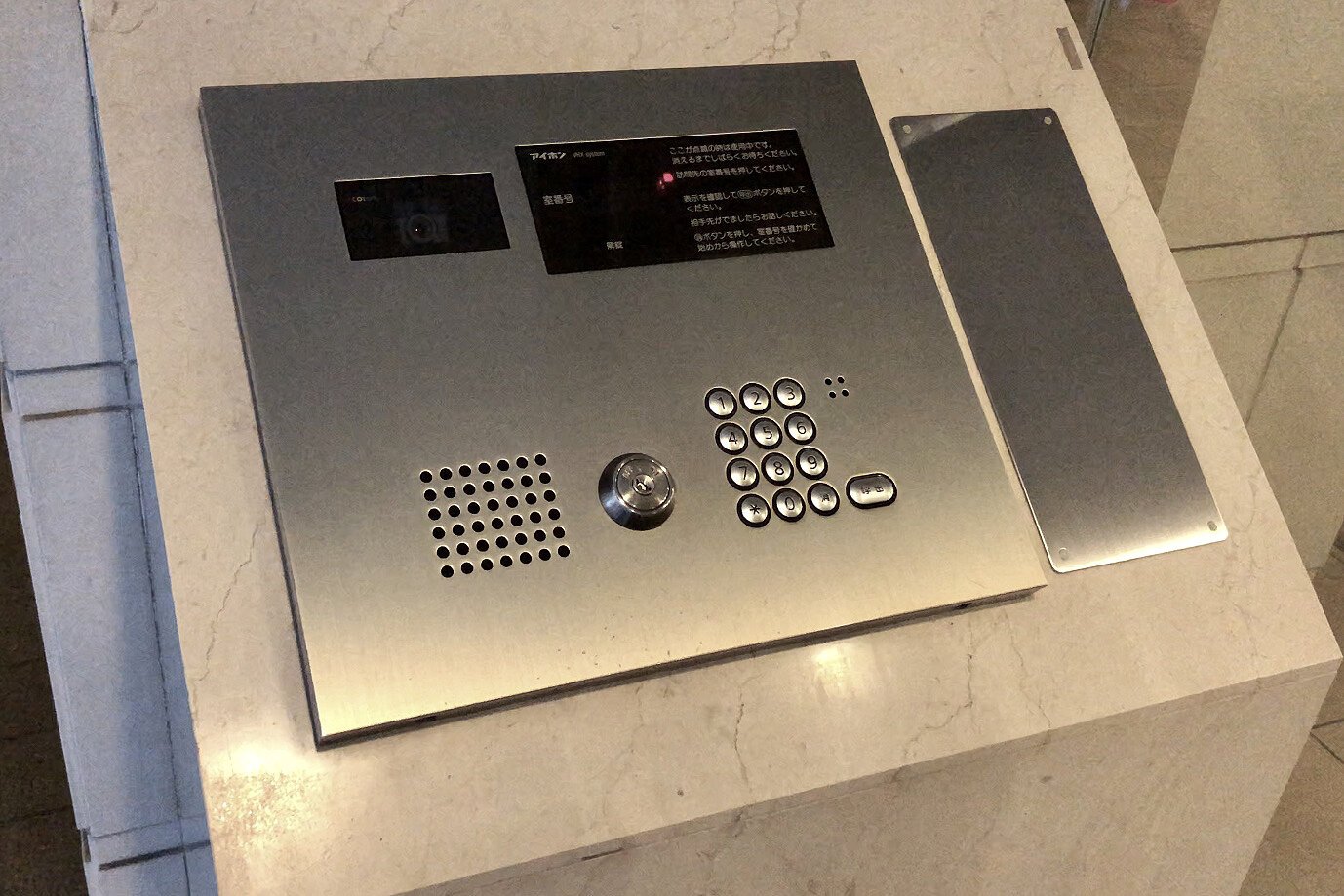
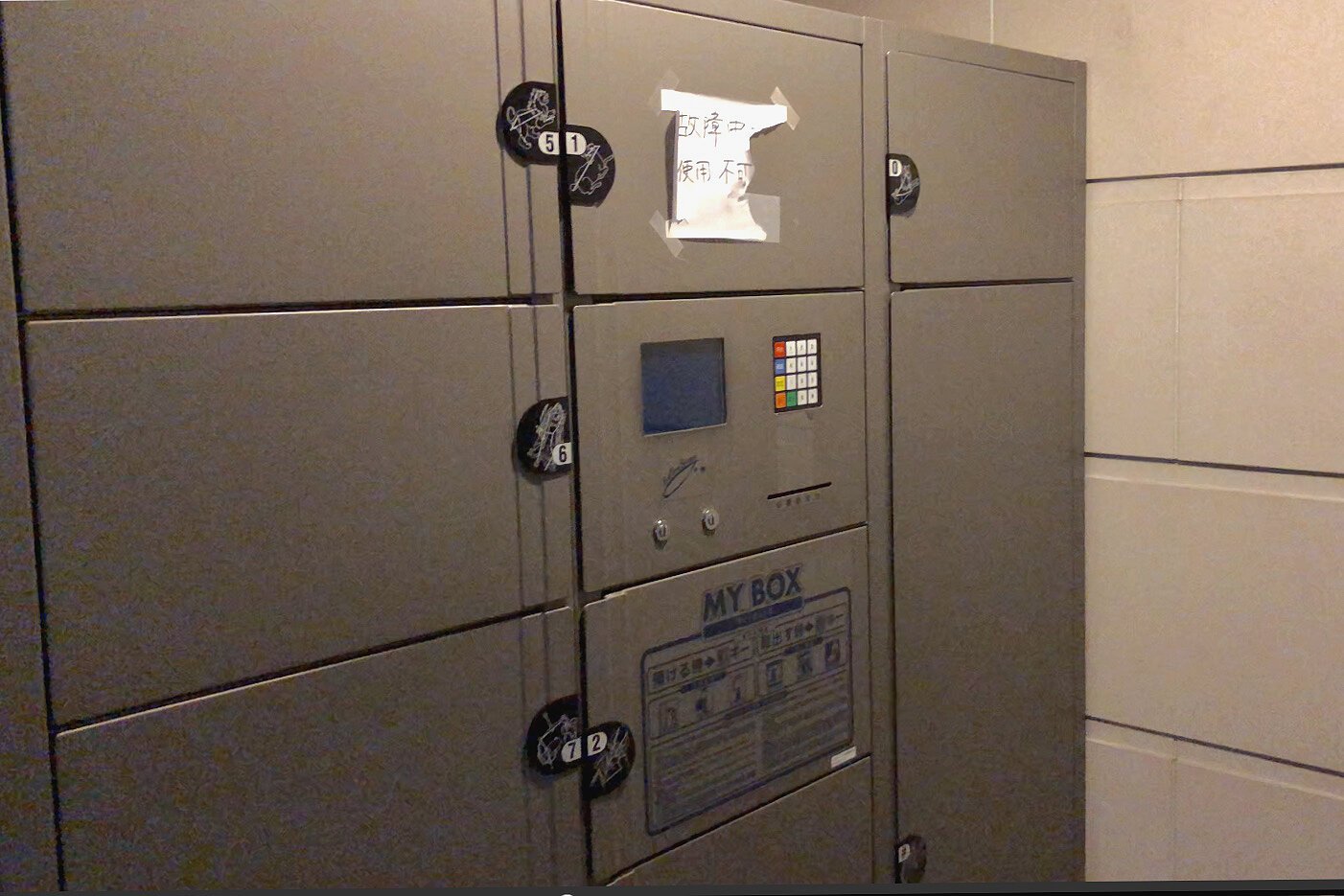

The building was next to an expressway, so the lower floors may have been a little on the noisy side. To the front of it was an office building of about equal height and another apartment building was on the opposite side of the expressway.
A woman would come and clean the apartment almost every morning so the common areas of the building were pretty well kept.
The apartment
My apartment was classified in Japan as a 1K, which means 1 room and a kitchen. It’s basically a simple studio. 1Ks are very common in Japan as living with non-family roommates isn’t typical, traditionally speaking.
Key features
24 sq. m (258 sq. ft.)
Stove with 2 gas burners
Bathroom with shower, tub
Washing machine hookup
1 concrete “designer” wall
Balcony with half view of Shinjuku
Sliding door with double-paned glass and invisible retracting screen
Higher than typical ceiling, concrete
Fees and costs
The monthly rent totaled to 95,000 JPY or about $950 USD. This included the management and service fee of 7,000 JPY ($70). When looking at the monthly costs, it’s pretty reasonable considering the size and density of the city, and quality of the apartment itself.
The initial costs, however, were a bit high.
Initial costs
While exact costs may vary depending on the rental agency, it is typical that there will be a deposit and “key money” amongst a few other smaller fees. The key money is what was a bit different from any rental experience that I had.
Poorly explained to me as a non-refundable “thank you” fee to the property owner for letting me rent, it’s paid at the beginning of each contract term. This means that you’ll pay it again if you choose to stay at the location and renew for another 2 years. Personally, I think it’s a ridiculous fee but that’s the norm in Japan.
Another fee I was charged was a cleaning fee that they used when I moved out.
My initial moving-in expenses were something like this:
Deposit: $950 (1-month’s rent)
Key/thank you money: $950
1st month’s rent: $950
Cleaning fee: $385
Key fee: $185
Insurance: ~$120 (1/year)
Debt collector fee: ~$100 (1/term)
Total: $3,640 (approx.)
Utilities
The rent didn’t include any utilities.
My monthly utility bills on average were something like this:
Electricity: $30-65 (depending on season)
Gas: $25
Sewer & Water: $30 (once every 3 months)
Internet: $45
Total: $110-$145/month (approx.)
This may total to more than a lot of other cities around the world. However, to get to live in one of the best cities in the world, a huge one at that, in my own place with my own bathroom and washing machine and everything, to me, was worth it.













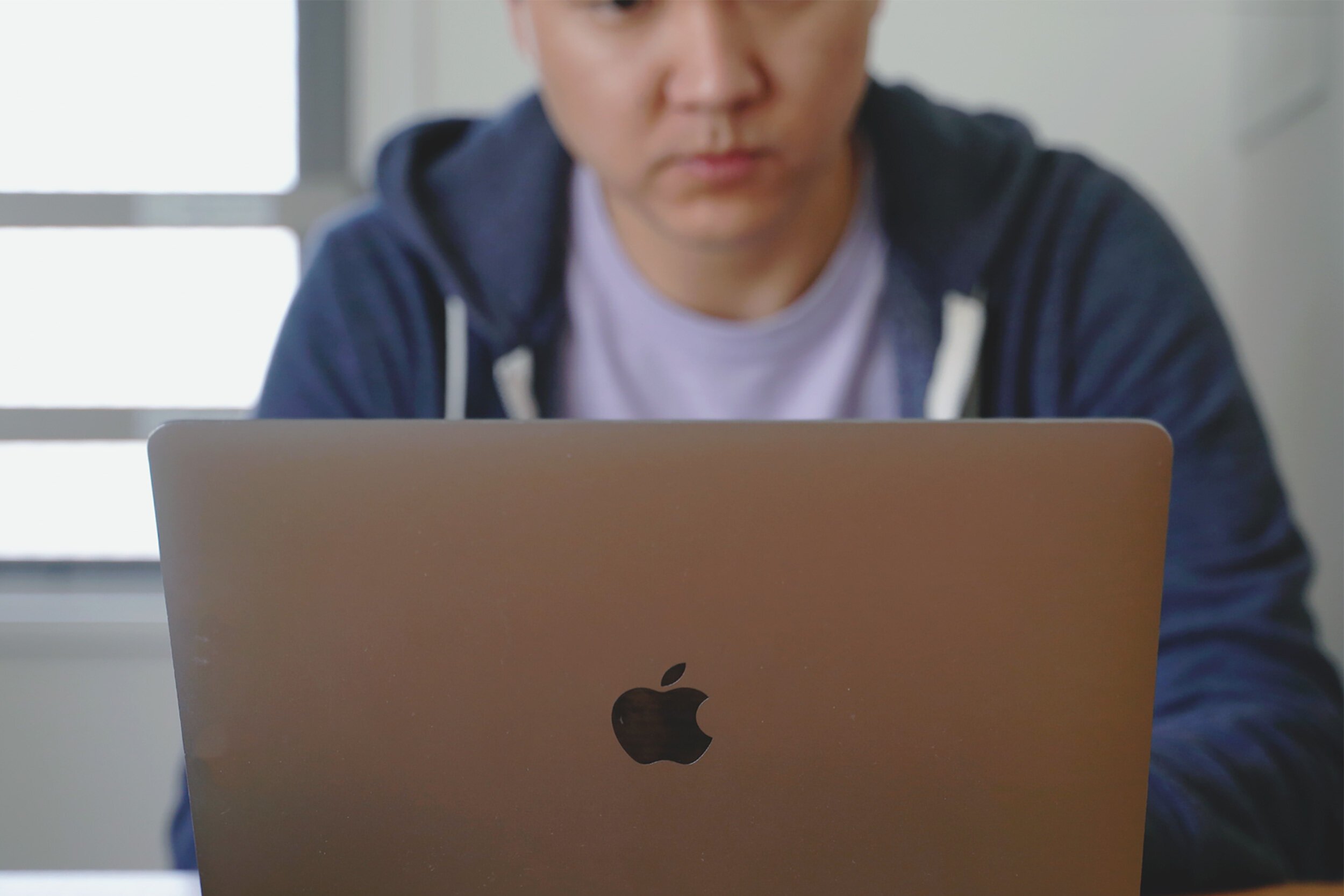


























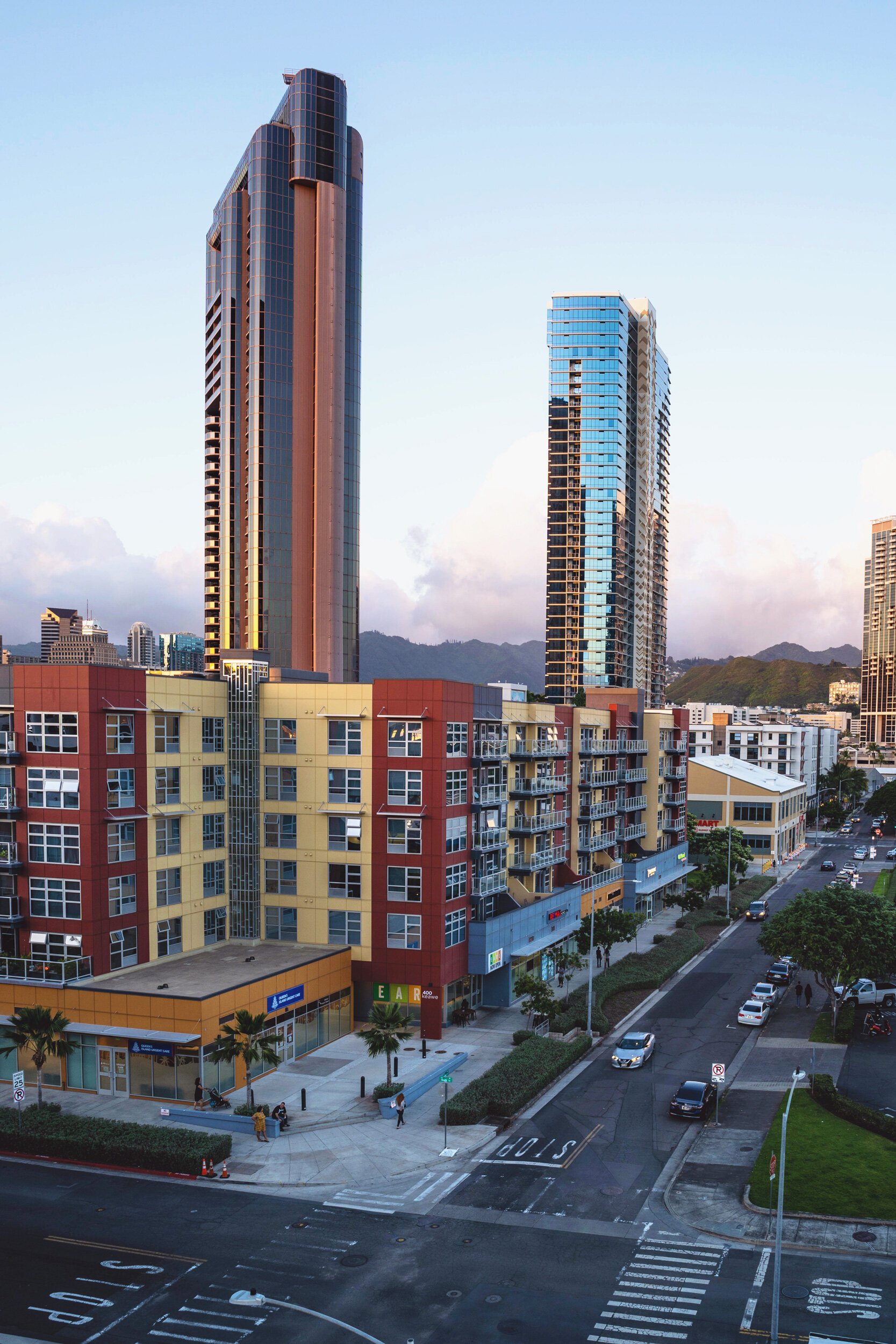




















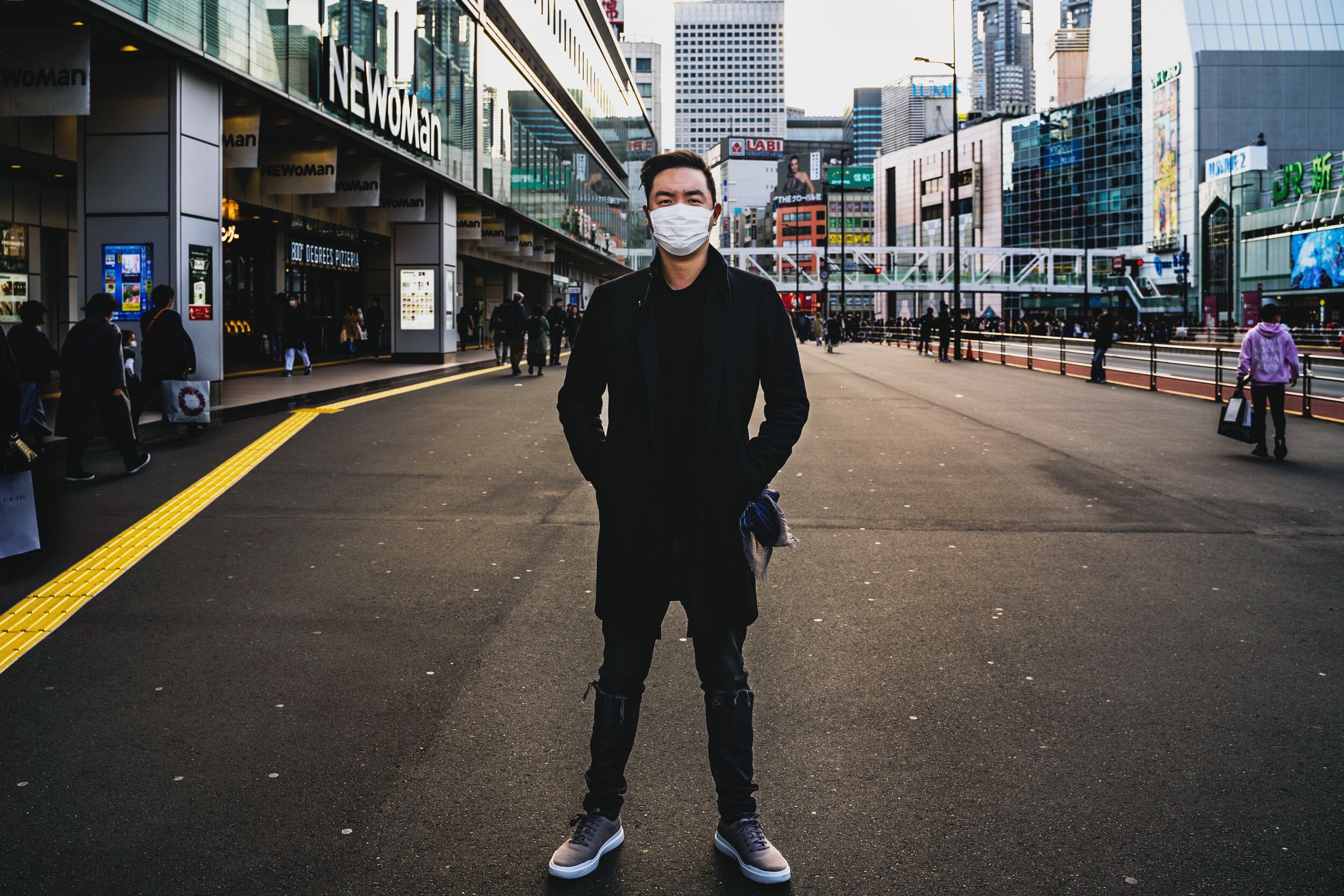





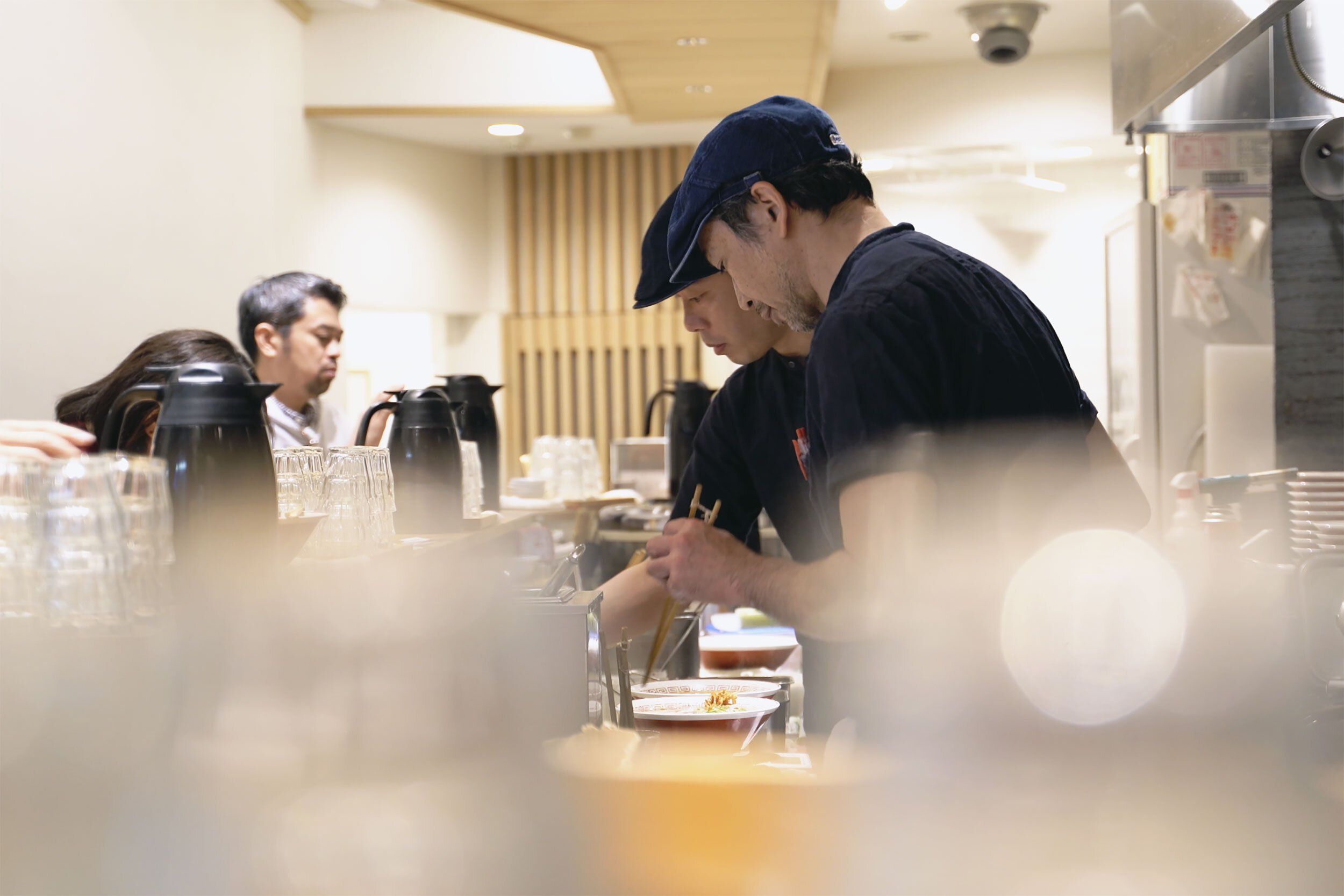





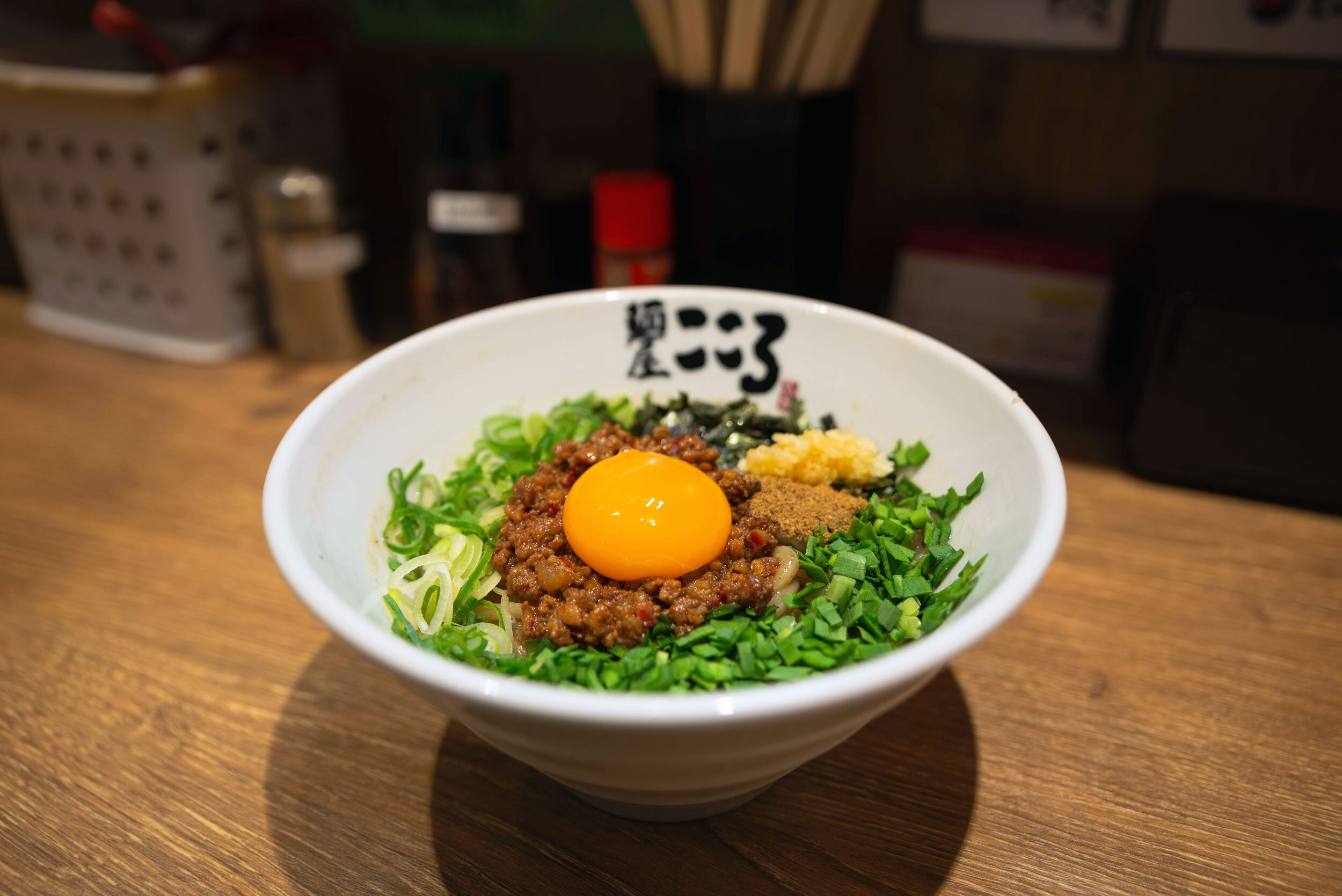
























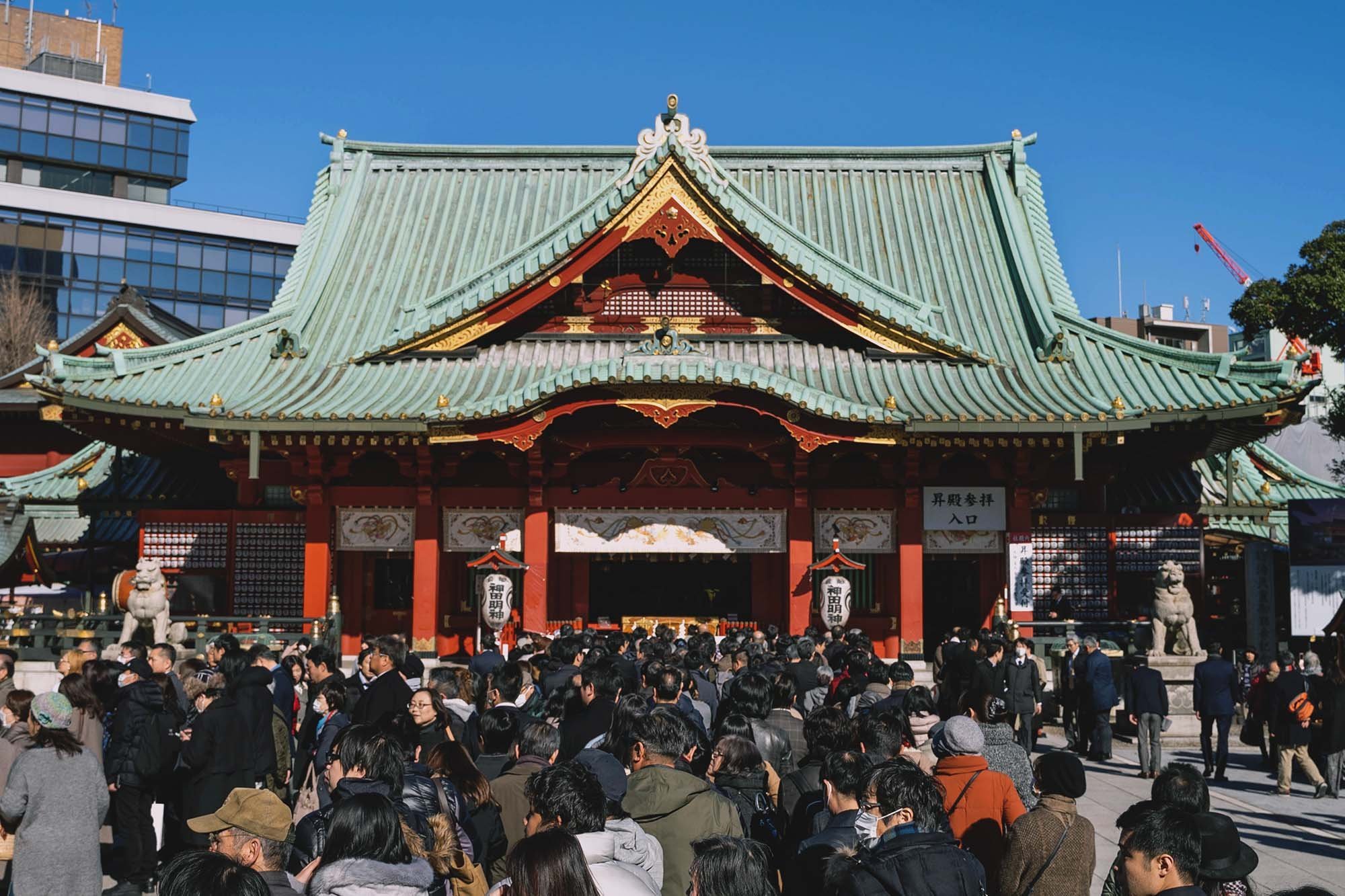








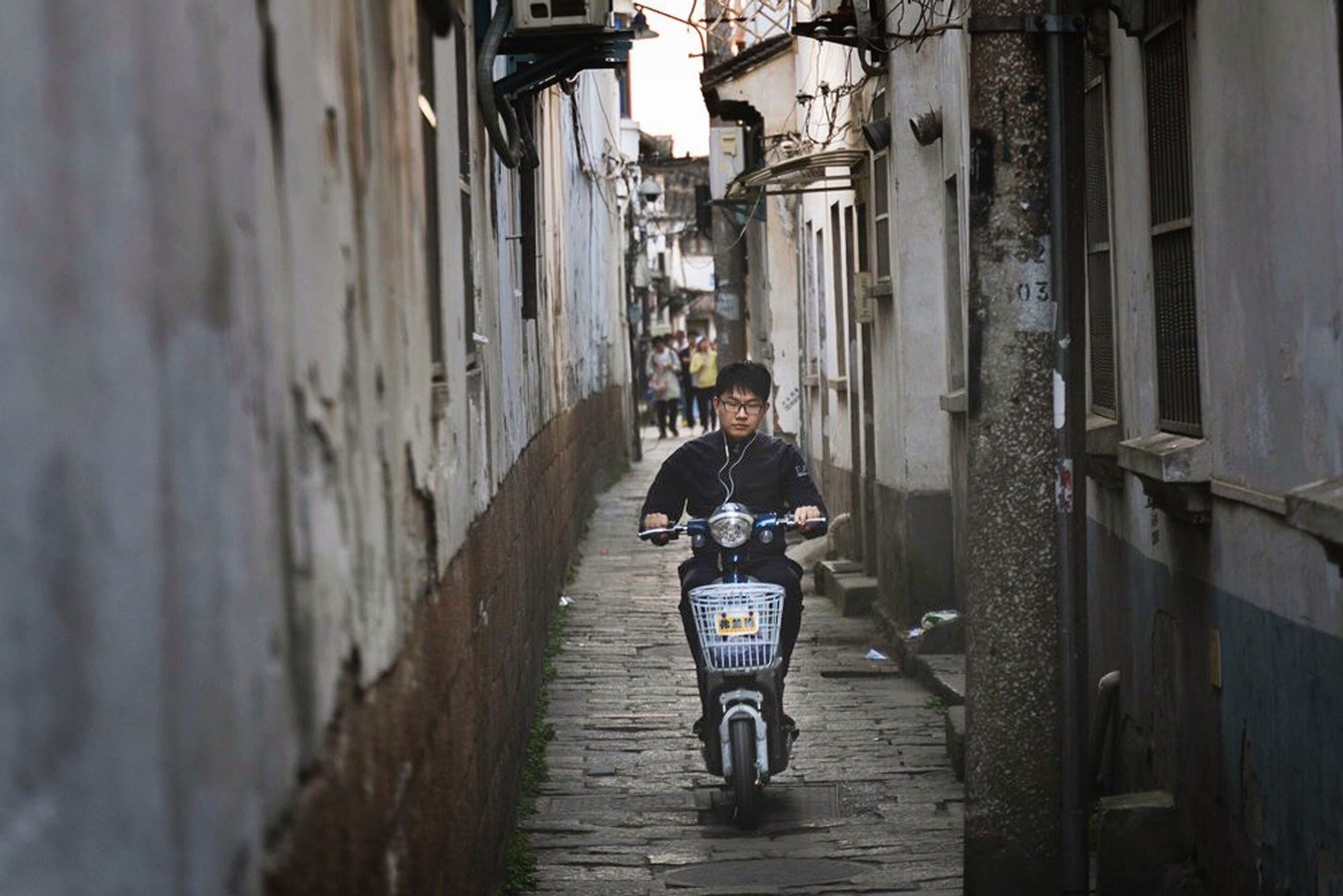












![A man zooms through a crowded alley. [INSTAGRAM]](https://images.squarespace-cdn.com/content/v1/63f8b23b0626755198127ae3/1677547510723-42X49XRRQVXBJNSH36BE/suzhou-22-street-qianxiaozhulong-01.jpg)

![An elderly woman eats dinner outside. [INSTAGRAM]](https://images.squarespace-cdn.com/content/v1/63f8b23b0626755198127ae3/1677547519945-4HJTWXL2IIUAGP0N2OB7/suzhou-24-qianxiaozhulong-03.jpg)


















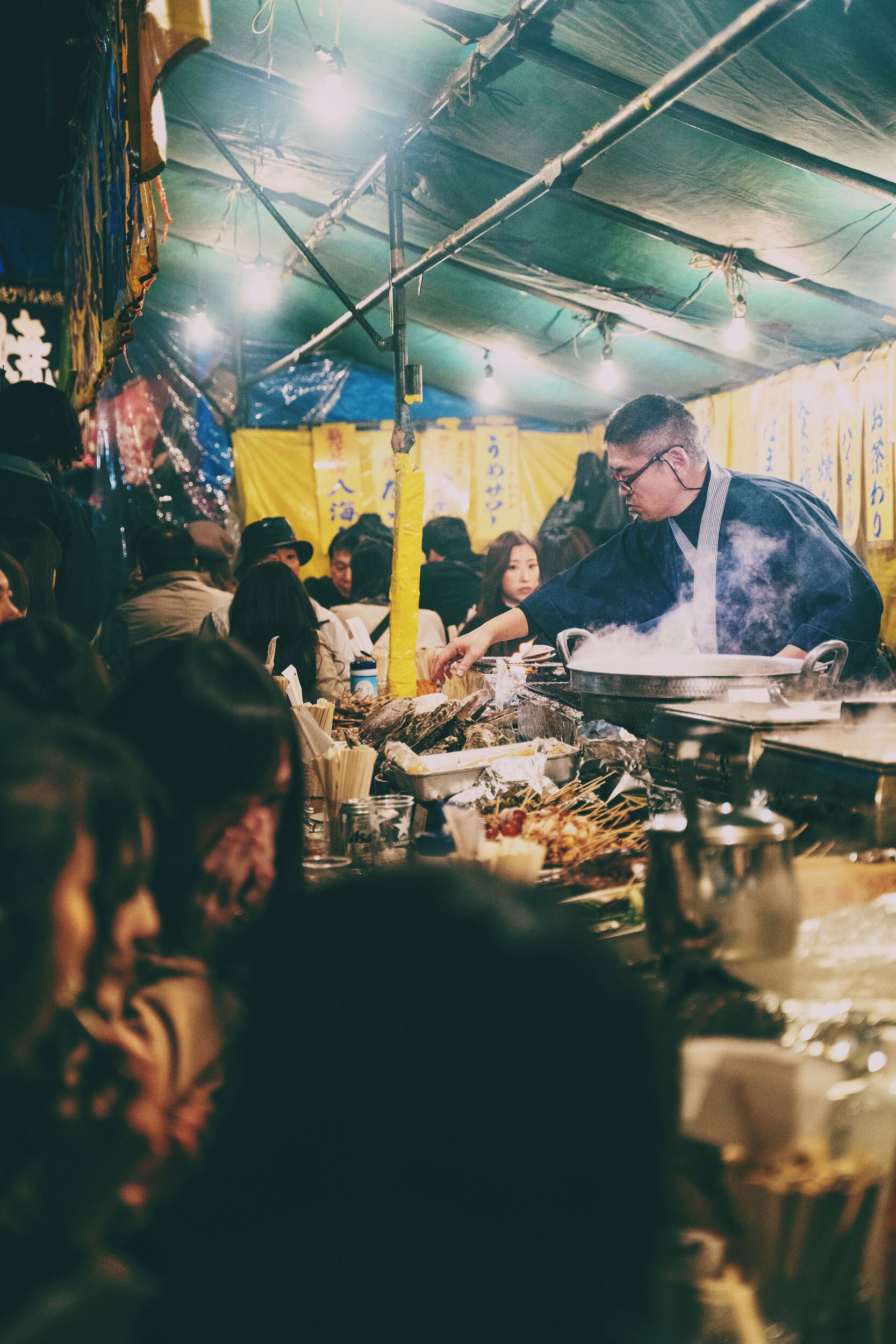
























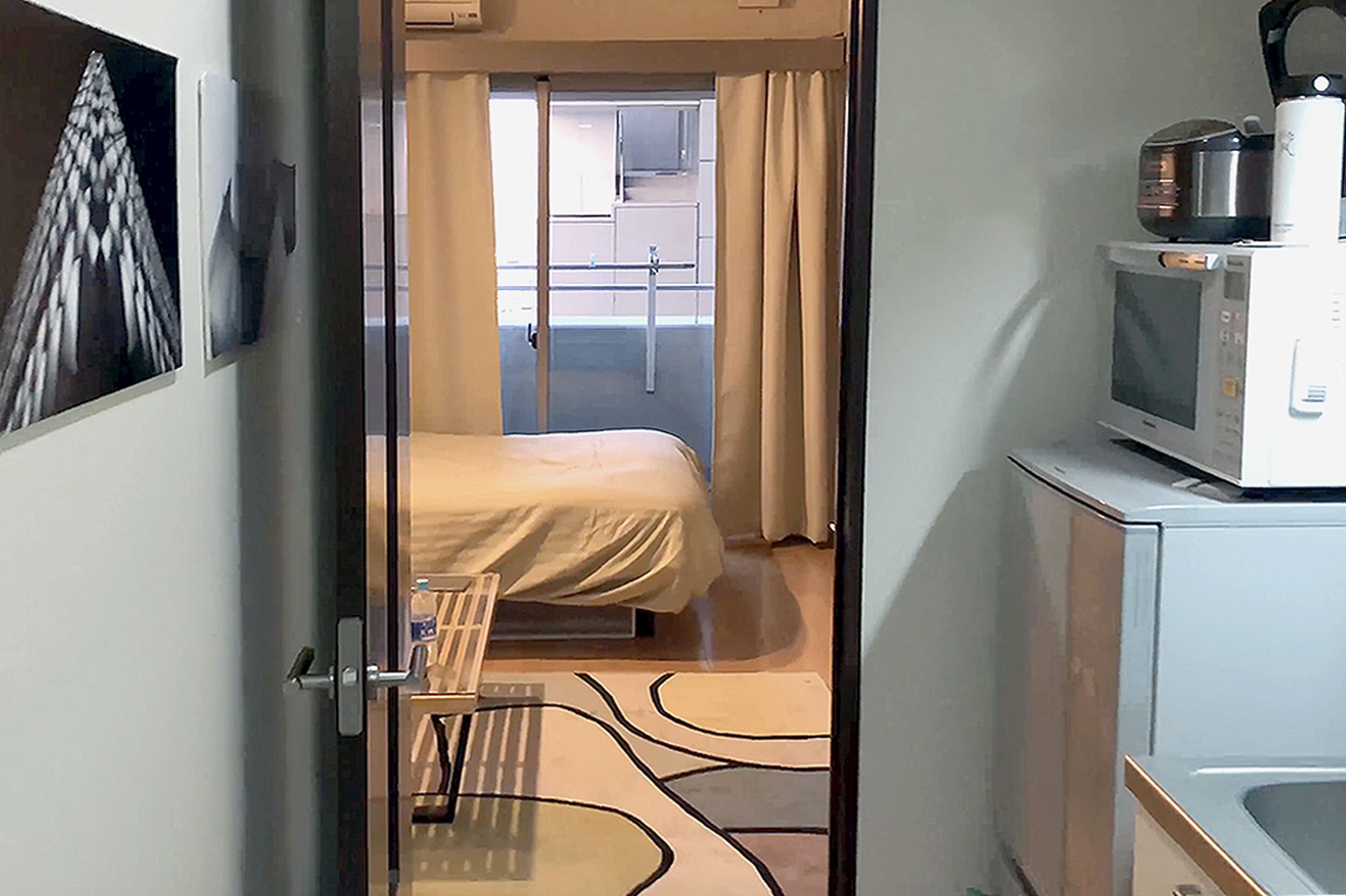





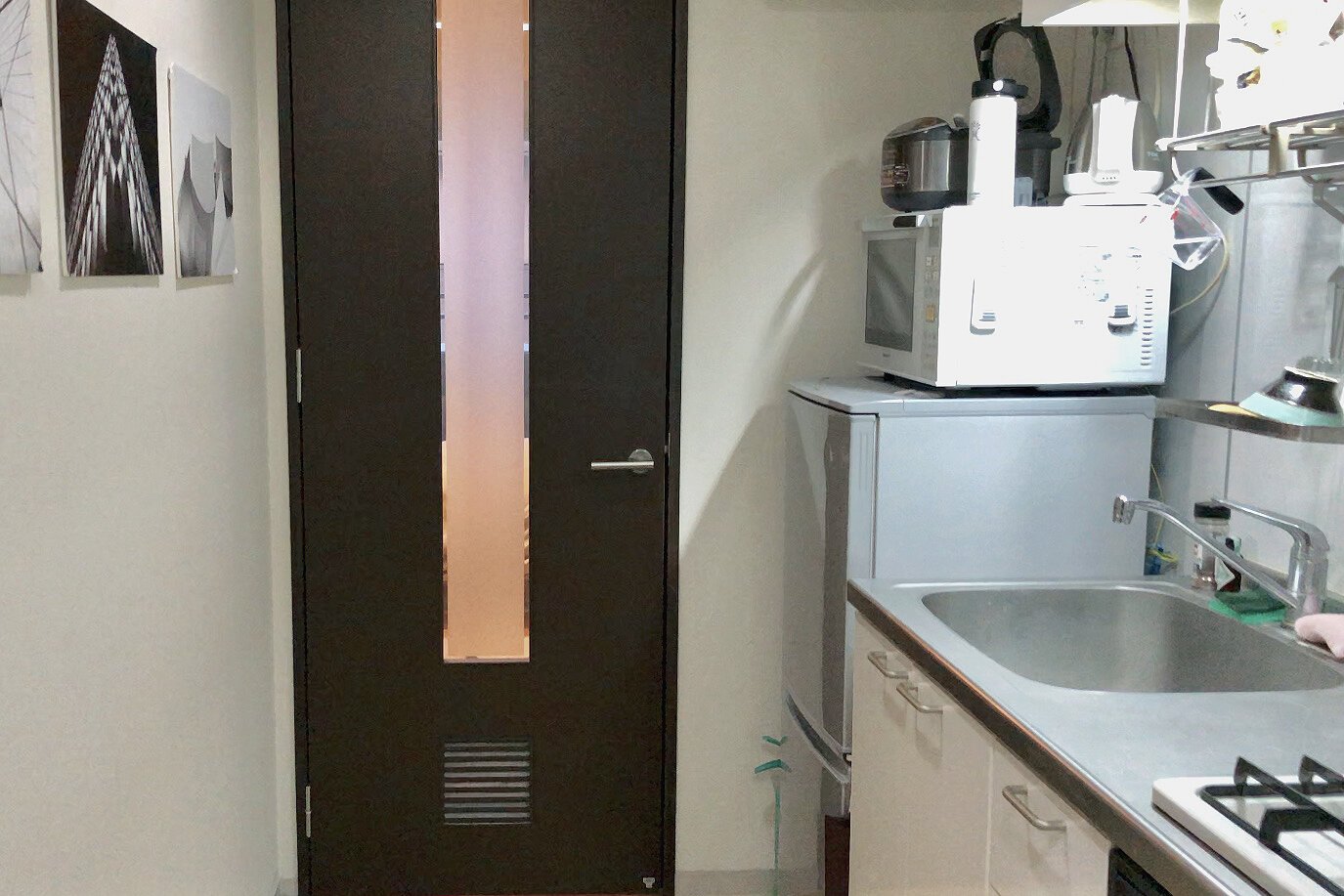




What apartment-hunting and buying was like in Tokyo, how much apartments cost in the city, and some things that should be considered.